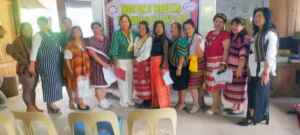CULTIVATING CURIOSITY IN TEACHING SCIENCE
Johnny P. Buasen
In an ever-changing world where scientific literacy is necessary, fostering a sense of curiosity among high school students is essential. Curiosity motivates students to investigate, question, and gain a deeper knowledge of scientific subjects. According to research, practical, hands-on approaches to scientific education considerably improve student engagement and comprehension (Llewellyn, 2007). This article looks at effective ways for increasing interest and boosting scientific education in high schools.
Hands-on learning and experimentation are two of the most effective strategies to promote high school students’ interest. According to Haury and Rillero (1994), students are more likely to engage with the topic when they can alter factors and see the results directly. Laboratory experiments, field visits, and interactive simulations give students hands-on experience that helps them understand abstract topics better. For example, when students conduct experiments on photosynthesis using live plants, they witness the process in real-time, reinforcing theoretical
knowledge with practical application.
Inquiry-based learning encourages students to ask questions, conduct research, and draw conclusions from their findings. This method replaces the typical teacher-centered approach with a student-centered one, emphasizing critical thinking and problem-solving abilities. As Bybee (2006) points out, inquiry-based learning meshes with kids’ innate curiosity, making science more interesting and relevant. Teachers can help by asking open-ended questions and guiding students through the scientific process, creating a classroom environment in which curiosity thrives.
Incorporating technology and multimedia into scientific teaching can help pique interest and improve learning. Virtual labs, interactive simulations, and educational movies are all examples of digital tools that make complicated scientific phenomena more accessible and entertaining. According to Liu and Chen (2010), using multimedia in scientific teaching enhances student enthusiasm while also improving academic performance. Using technology, teachers may create dynamic learning experiences that attract students’ attention and increase their comprehension
of scientific subjects.
Collaborative learning and peer interaction play a vital role in cultivating curiosity among high school students. Group projects, peer evaluations, and collaborative problem-solving exercises enable students to share their ideas, ask questions, and learn from one another. Vygotsky’s (1978) social constructivist theory emphasizes the role of social interactions in cognitive development. When students collaborate on science projects, they are exposed to a
variety of perspectives and ideas, which can pique their interest and motivate them to investigate further.
Fostering curiosity in high school science students is essential for developing their scientific literacy and critical thinking skills. Hands-on learning, inquiry-based techniques, technological integration, and collaborative learning are all effective strategies for increasing students’ scientific engagement and knowledge. Teachers can inspire the next generation of scientists, inventors, and informed citizens by fostering a culture of curiosity.
USAPANG HALAL ANG HALAL AY PARA SA LAHAT
July 6, 2024
Educator's Corner
ENHANCING EARLY LITERACY AND NUMERACY: ELLN RE-ECHO LAC SESSION FOR KINDER TO GRADE 3 TEACHERS
May 3, 2025
THE EFFECTS OF PARENTAL INVOLVEMENT ON STUDENT’S BEHAVIOR
March 22, 2025





